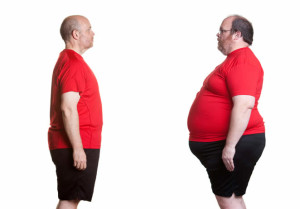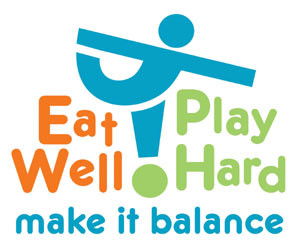Continuing our series on the importance of taking care of our bodies and minds, and how we should go about it, Amit Baraskar — Vice President & Head- Treasury, tackles a topic which is of worldwide concern, and very important today — Obesity.
HE WHO INDULGES…..BULGES!
It’s as simple as that.
Today one of the most discussed topics in health is obesity. Most of us are already aware of the disadvantages and dangers of being overweight. But how many of us are taking it seriously? Do we have any idea of the havoc it can cause on our health and well-being?
“Worldwide obesity has more than doubled since 1980,” said the World Health Organization (June 2016)
According to the Surgeon General of the USA, obesity today is officially an epidemic; it is arguably the most pressing public health problem we face. Three of every five Americans are overweight; one of every five is obese. The problem is not in the U.S alone. The United Nations reported that in 2000 the number of people suffering from over-nutrition around the world–a billion–had officially surpassed the number suffering from malnutrition—800 million.
A sobering thought!
How do we determine whether a person is obese or not? What are the norms?
As defined by WHO, it is the Body Mass Index or BMI.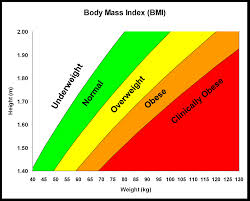
The ‘Body Mass Index’ (BMI) is a measure of the human body’s relation to its individual height and mass (weight). The scoring system enables a good indication of whether somebody is underweight, overweight or within normal limits for their body shape and size.
Body mass is quite simple to calculate once height and weight have been recorded as the below formula illustrates:
BMI = MASS (KG) ÷ HEIGHT (M)²
For example, a 60kg female runner who is 1.7m (170cm) tall, would have a BMI score of 20.76.
To identify the zone in which your BMI scores, refer to the graph.
A BMI up to 25 is desirable. While BMI is an excellent indicator accepted across the globe, it is not fool proof for bodybuilders and athletes who have substantial muscle mass. This is because the BMI calculation does not take into account any extra muscle mass, and also bone density.
Also, BMI makes no differentiation between male and female whereas the fact remains that females need more essential fat (females need about 10-13% as compared to just about 2-5% in males due to the demands of childbearing and other hormonal functions) thus naturally increasing the overall body fat % and increasing the body weight for females. All these factors must be taken into consideration.
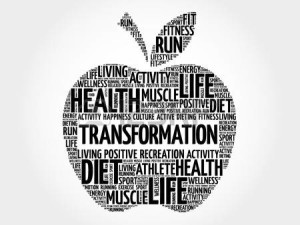 Today obesity is not just about being plump or fat; it is a major health risk. Associated with weight gain are increased risks in adulthood for joint problems, angina, high blood pressure, heart attacks, strokes and type II diabetes. What is even more alarming is that more and more children are becoming obese, and they will have problems as adults.
Today obesity is not just about being plump or fat; it is a major health risk. Associated with weight gain are increased risks in adulthood for joint problems, angina, high blood pressure, heart attacks, strokes and type II diabetes. What is even more alarming is that more and more children are becoming obese, and they will have problems as adults.
What has caused this increase?
One of the most prominent causes is the major change in our lifestyles due to technology which has impacted our lives, leading to less physical activity and laziness in the office and home. Another major factor is the changes in the way we eat. In this fast-food age, trans-fats dominate, and nutrition goes out of the window.
How do we combat obesity?
The good news is that weight loss can curtail some obesity-related risks. Losing as little as 5-10% of body weight offers meaningful health benefits to people who are obese, even if they never achieve their “ideal” weight, and even if they only begin to lose weight later in life.
It warrants a certain amount of discipline and a positive mindset. It means getting onto a smart fat-loss plan, not just another weight loss diet, but a healthy, nutritious one –consistency is the key.
- A smart and effective diet: A diet which helps limit the fat intake, and reduces the existing fat levels while also ensuring adequate nutrition to the body.
- Exercise: A complete exercise programme which lays a higher emphasis on the cardio vascular part. A daily cardio programme should form an integral part of the regime.
- Stress busters: One should choose those which suit her/ him., such as yoga or meditation or listening to music, or pursuing a hobby.
- Monitoring progress through the right measures: While weight, BMI, etc. are the easiest measures there are other indicators such as – Body Fat Percentage (BFP), visceral fat percentage, cholesterol (lipid profile) and blood sugar, blood pressure (improvement in BFP has positive impact on all these and vice versa).
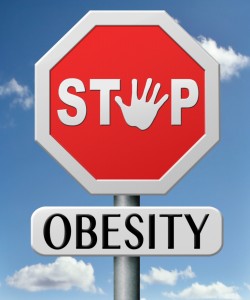 Believe me – ça vaut la peine! (it’s worth the effort!). Knowing where you stand and changing habits to ensure that you stay untouched by obesity will pay heavy returns in the long run and also help to hedge against quite a few risks – including some life threatening ones.
Believe me – ça vaut la peine! (it’s worth the effort!). Knowing where you stand and changing habits to ensure that you stay untouched by obesity will pay heavy returns in the long run and also help to hedge against quite a few risks – including some life threatening ones.
Diet, exercise, medications and even surgery can lead to weight loss. Yet it is much much harder to lose weight than it is to gain it. Prevention of obesity must begin at an early age and extending across a lifespan could vastly improve individual and public health, reduce suffering, and make the nation healthier as a whole.
So if you feel you need to lose weight, there are many ways to do it, and there is much help and support around. Make use of it.
Start today! Stay safe, stay well, and stay healthy.

